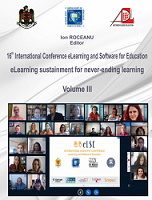VIRTUAL REALITY THERAPY FOR PAIN
VIRTUAL REALITY THERAPY FOR PAIN
Author(s): Ioan-Alexandru Bratosin, Ionel-Bujorel Păvăloiu, Andrei Vasilăţeanu, Nicolae Goga, George Drăgoi, Diana GavajucSubject(s): Psychology, Health and medicine and law, ICT Information and Communications Technologies
Published by: Carol I National Defence University Publishing House
Keywords: Virtual Reality Therapy; Virtual Reality; pain management, serious games;
Summary/Abstract: Pain is the unpleasant condition raised as a normal response of the body to injury and illness. In the case of Chronic Pain Syndrome, this can ailment can continue even after the cause that provoked it has disappeared. The classical painkiller medicines (like paracetamol, non-steroidal anti-inflammatory drugs and opioids) are used as therapy, but they raise problems of overdose, adverse side-effects and addiction. Virtual Reality Therapy (VRT) is showing promise as a possible drug-free substitute for pain management. The VRT lets patients to navigate through Virtual Reality environments and to execute operations which are often personalized to specific medical conditions. It offers a multisensory experience that captures the subject attention on an innate level and attenuates the discomfort. Besides the lack of painkiller medicine drawbacks, it is well received by the young patients, which usually have supplementary restrictions to the pharmacological agents. We present in the paper the state of the art in the domain and the results we obtained with the two VRT applications we developed in Unity. The first one, Snow Land, was targeted primarily to patients with burn wounds. The action takes place into a cold environment inhabited by penguins and polar foxes and some of the regular activities are walking, throwing fish and snowballing. In the second one, Angling in Virtual Reality, we are trying a more general approach, with a larger scope, represented by the typical relaxation activity of fishing. The degree of immersion is higher, by using better graphics, sounds and the Leap Motion controller. These approaches permit us to understand what type of interactions, environments, mechanics and sound ambience are more beneficial for providing the patient an efficient pain relief effect and to select the direction we intend to continue our efforts.
Journal: Conference proceedings of »eLearning and Software for Education« (eLSE)
- Issue Year: 16/2020
- Issue No: 03
- Page Range: 178-185
- Page Count: 8
- Language: English

